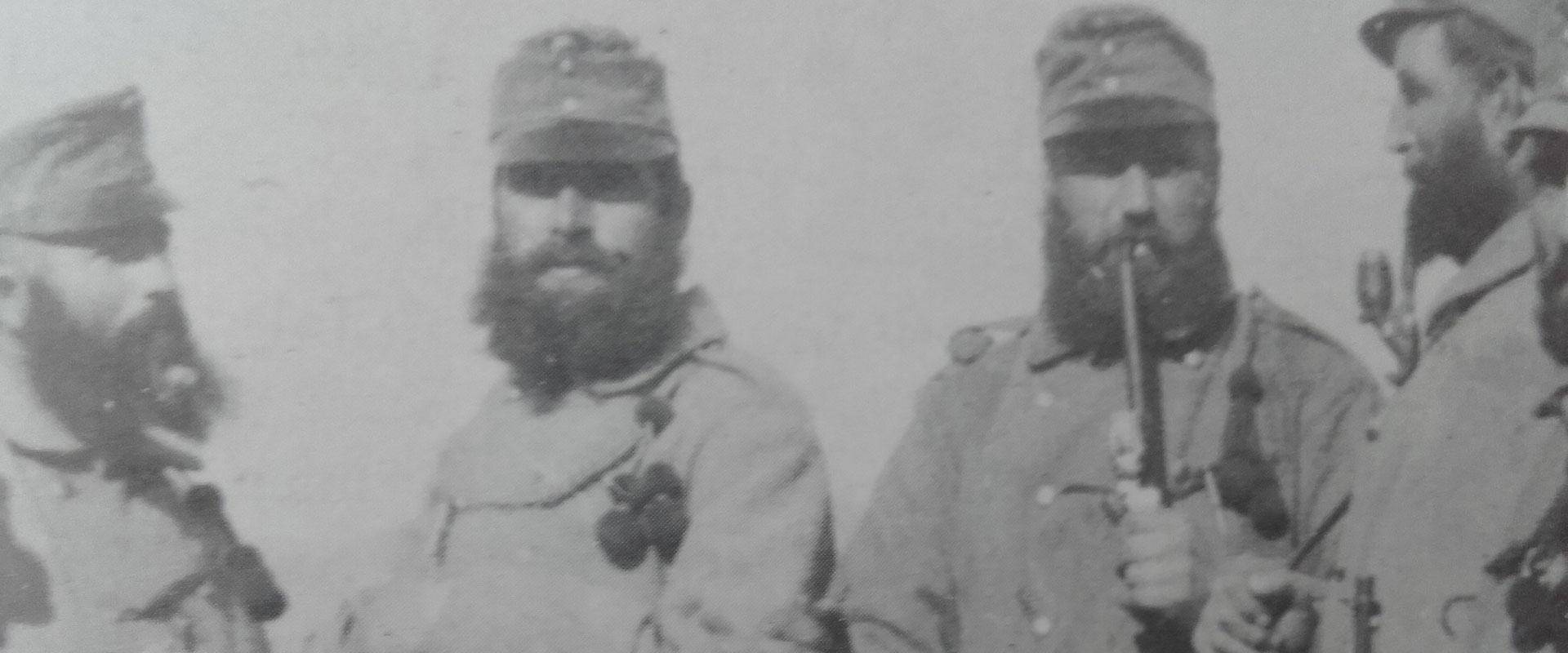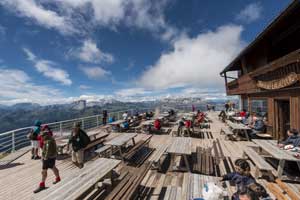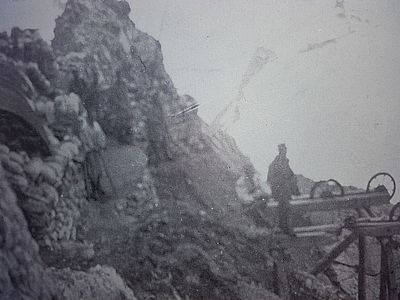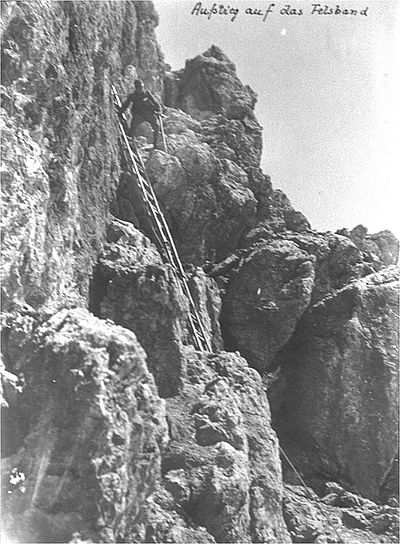The Kaiserjäger path was built by the Austro-Hungarian troops as a safe access from the pass to the Austrian trenches and emplacements on the summit of Mt. Lagazuoi.
For two and a half years, the Kaiserjäger climbed the mountain on this steep path, crossing a 10-metre high and 25-metre long suspension bridge in order to supply the troops stationed on the Lagazuoi. Every soldier in the front lines needed his own weight in food, munitions and fuel every day.
At a short distance from the Kaiserjäger, the Alpini occupied the Martini Ledge on the south face of the Lagazuoi expanding it into a sort of fortress. All attempts made by the Kaiserjäger to displace the Italians from there failed. Not even the explosion of four Austrian mines on the ledge achieved any tactical result.
For six months, the Italians laboriously drilled holes in the rock of the south wall of the mountain arriving at almost 40 metres below the Austrian emplacement of the pre-summit (Anticima), at 2668 metres above sea level. They blew up this tunnel with 33 tons of explosives on 20th June 1917.
This huge explosion changed the morphology of the Lagazuoi and thus the landscape.
In this way they succeeded in eliminating an Austrian outpost and advancing on the ridge, but even this didn’t bring about substantial results.
The soldiers had to wage a long, unbearable trench warfare until the troops were withdrawn after the defeat of Karfreit.




